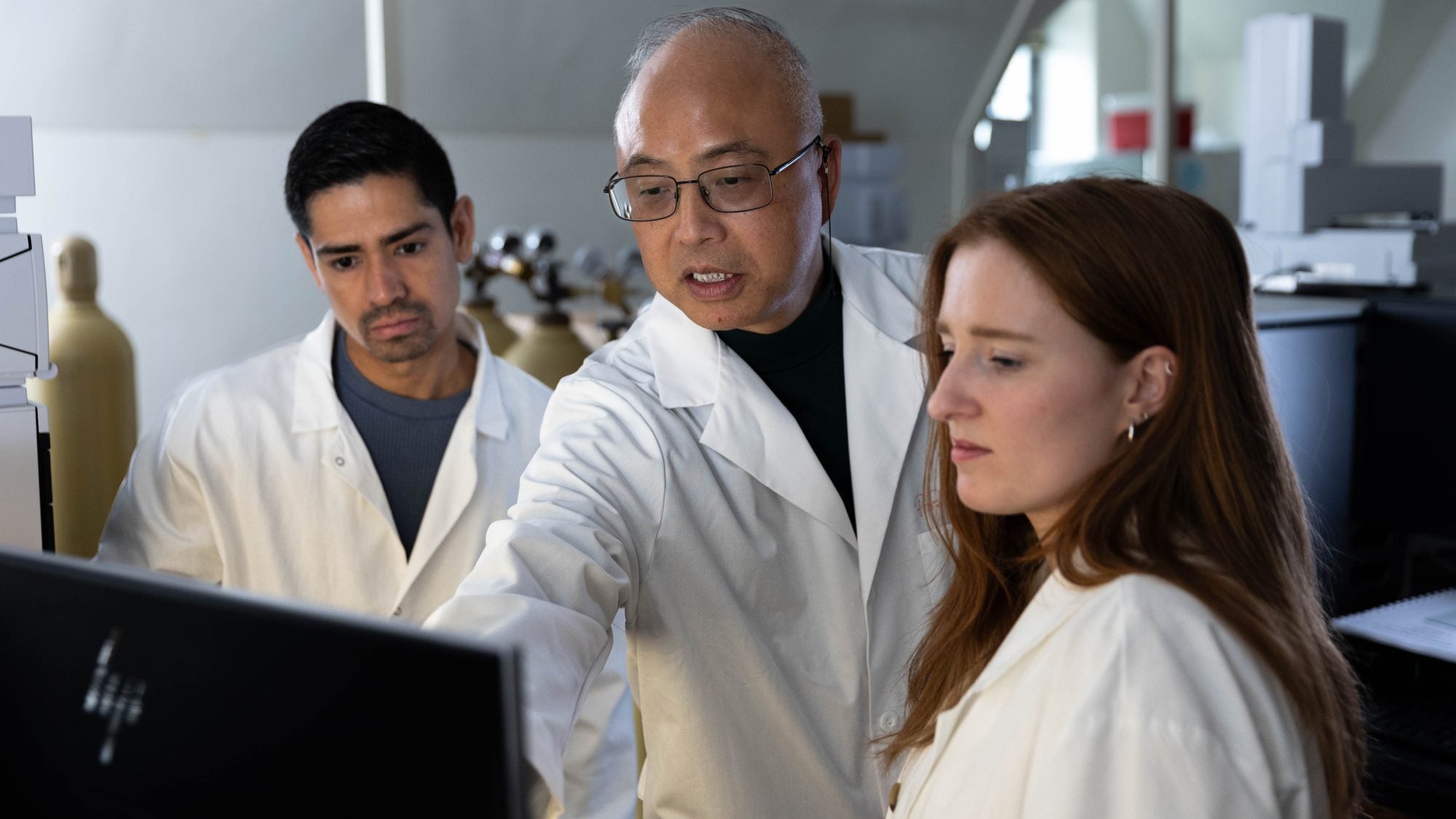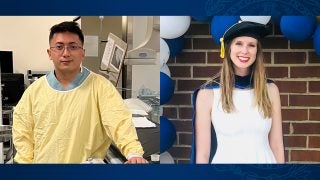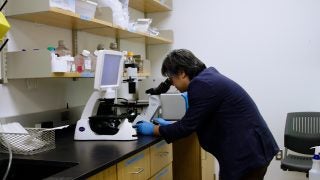Georgetown has received the highest classification for its research and training, earning the Carnegie Classification of Institutions of Higher Education’s designation as an “R1” institution.
The designation, awarded to U.S. universities with “very high research activity,” marks the 30th year Georgetown has achieved top-tier stature. This year’s R1 Carnegie Classification was awarded to 187 doctoral universities.
Georgetown invests in global, interdisciplinary research across a range of pressing issues, from advances in pancreatic cancer treatment to predicting mass migration patterns. In fiscal year 2023, the university invested more than $337 million on research and development.
Georgetown also trains the next generation of researchers in disciplines ranging from the physical and life sciences to the humanities, graduating more than 185 research doctorates from 2022-2023 plus professional practice doctoral degrees.
“On behalf of Georgetown, we are honored to receive the R1 designation for the past 30 years from the Carnegie Institute,” said Soyica Diggs Colbert (C’01), Georgetown’s interim provost. “Our research is central to our Jesuit mission and values to develop critical solutions for the world’s most pressing problems. We will continue to invest in fundamental research that helps improve the daily life and future of communities around the globe.”
Life-Saving Research
Georgetown University Medical Center (GUMC) is home to the university’s most robust research enterprise, securing approximately $176 million in externally sponsored funding in fiscal year 2024 to support a broad continuum of research from basic laboratory research to clinical trials, behavioral studies and community and population level research.
The GUMC community is recognized internationally for its work, particularly in the areas of cancer, neuroscience, neurology, health equity and global health. GUMC is one of few medical centers in the country to hold both a Clinical and Translational Science Award from the National Institutes of Health and a cancer center support grant from the National Cancer Institute, a part of the National Institutes of Health.
Georgetown and its academic health system partner, MedStar Health, also collaborate to deliver transformative research from the laboratory to clinical care. Together, GUMC and MedStar Health amassed $246 million in extramural-sponsored research in FY 2024.
“In partnering with MedStar Health, we ensure that we are able to bring advances more quickly to the patients and families we serve,” says Dr. Norman J. Beauchamp Jr., executive vice president for Health Sciences and executive dean for the School of Medicine.
“Together, we can lessen the struggles of those faced with disease, and to ensure affordable and accessible care for all, we must find new and better ways to sustain health and respond to illness. Basic, applied and translational research underpins the pathway to improving human health. Our scientific endeavors are critical to hope and healing for all.”
Improving Health and Well-Being
GUMC researchers like Dr. Dan Merenstein are also looking for ways to improve patients’ everyday health, particularly in primary care settings.
In 2022, Merenstein secured a $23.6 million grant from the Patient-Centered Outcomes Research Institute to study sinus infections (also known as acute rhinosinusitis).
In the U.S., one in seven adults is diagnosed with acute rhinosinusitis every year, resulting in 30 million visits to the doctor’s office nationwide. For many, particularly hourly workers, taking time away from work to see a doctor and recover from an illness can significantly impact weekly pay.
Merenstein, a professor of family medicine in the School of Medicine, is leading the largest and first-of-its-kind clinical trial to find the best treatment for sinus infections to help people recover faster. He and researchers in six sites across the country are studying 3,700 patients to determine whether antibiotics or another treatment are most effective.
“These types of acute, non-long-term issues are often ignored but can have quite a significant impact on families and society,” says Merenstein. “It really comes down to asking: ‘When I’m in the clinic with a patient, how can I treat this patient better?’ Hopefully, my research is helping to answer that question.”
In 2024, Merenstein was elected to the National Academy of Medicine in recognition of his primary care research, an area in which less than 0.5% of NIH research funds are dedicated.
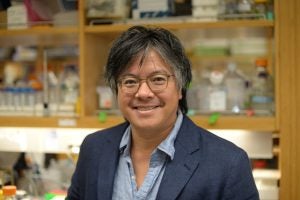
In addition to leading clinical trials, Georgetown researchers have made other important discoveries in life and physical sciences that are harnessed through licensing agreements to private companies or through start-up businesses. In 2024, Georgetown signed a total of 531 agreements related to technology transfer, obtained 40 worldwide patents and researchers disclosed 43 new inventions.
Professor Jeffrey Huang, for example, developed a novel drug that reversed the effects of late-stage multiple sclerosis in mice. Huang, a provost’s distinguished associate professor in the College of Arts & Sciences’ Department of Biology, is a named inventor on a patent application worldwide filed by Georgetown to cover this new use to treat MS and other neurological diseases. The discovery is expected to be tested soon in human clinical trials.
Interdisciplinary Research
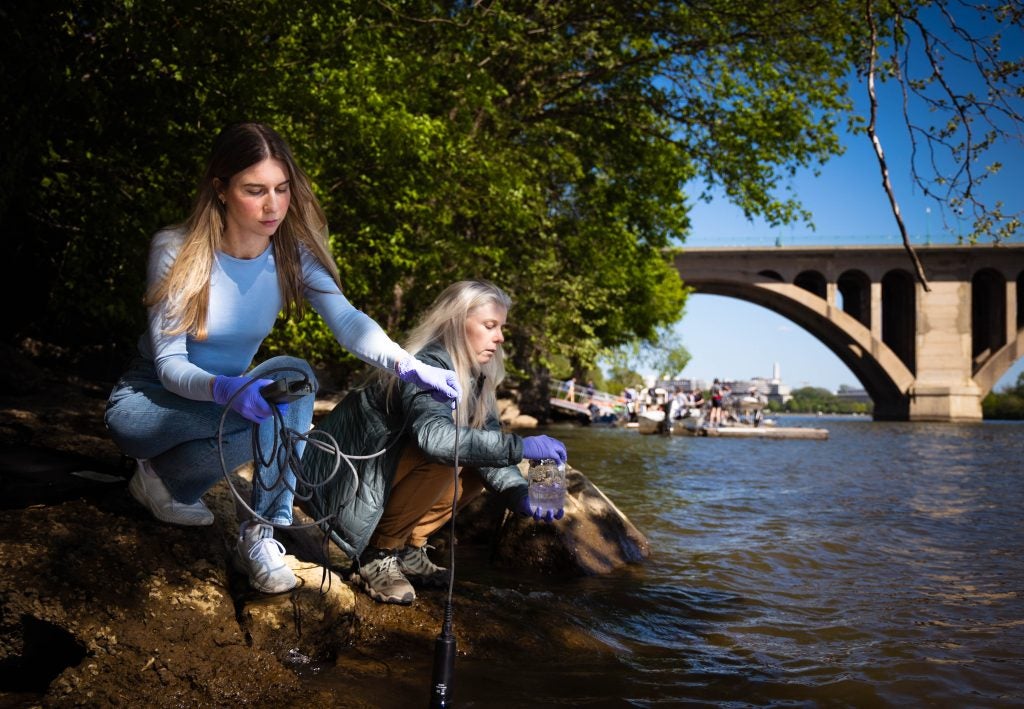
In addition to medicine, Georgetown researchers study policy, law, ethics, technology, the environment, business and the humanities and often collaborate across disciplines to make new discoveries and craft solutions to important issues.
In 2023, Georgetown researchers from the Massive Data Institute, Department of Mathematics and Statistics, and the School of Foreign Service collaborated with the United Nations High Commissioner for Refugees to better understand and predict mass movements of forcibly displaced populations.
The collaboration could help governments, NGOs and humanitarian organizations prepare for mass movements before they happen and intervene to address the factors that cause displacement.
“We always hear about how technology is destroying our world,” says Lisa Singh, a professor in the College of Arts & Sciences and McCourt School of Public Policy and a director of Georgetown’s Massive Data Institute, who co-leads the effort. “But it is also important to find ways to use technology to improve outcomes for individuals.”
Training the Next Generation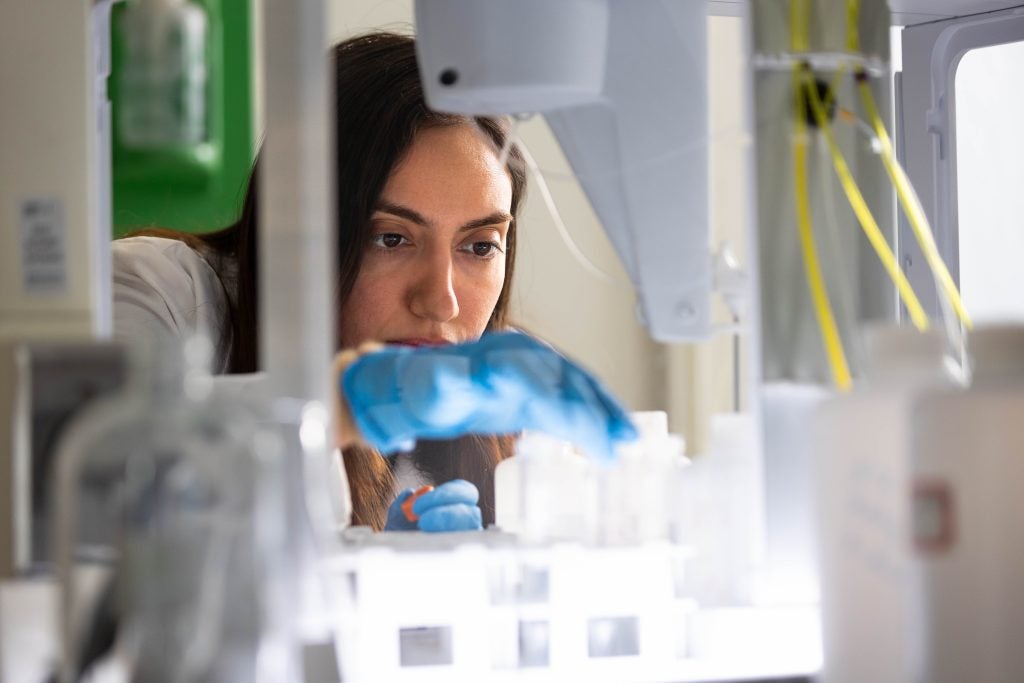
As part of its commitment to research, Georgetown trains the next generation to advance research in their fields.
“I can’t even put into words how much I like Georgetown,” said Gabbi Williams (G’23, G’29), a doctoral student in the pharmacology and physiology program. “The faculty are amazing, the student body is collaborative and the environment is so welcoming.”
Williams’ current research interests revolve around the brain, specifically neuropharmacology. She wants to dig deeper into the chain of events within the human body where a drug’s effect on the brain can subsequently affect other organs or organ systems.
After completing her doctoral degree, Williams sees herself becoming a professor, mentor and role model for future generations of scientists. She said she’s excited to become a mentor not only to spread her love for the inner workings of the brain and pharmacology, but also to decrease the gender imbalance within the sciences.
“I want to show the younger generation that once you set your mind to anything, it is possible — despite how you look and who you are,” says Williams.
